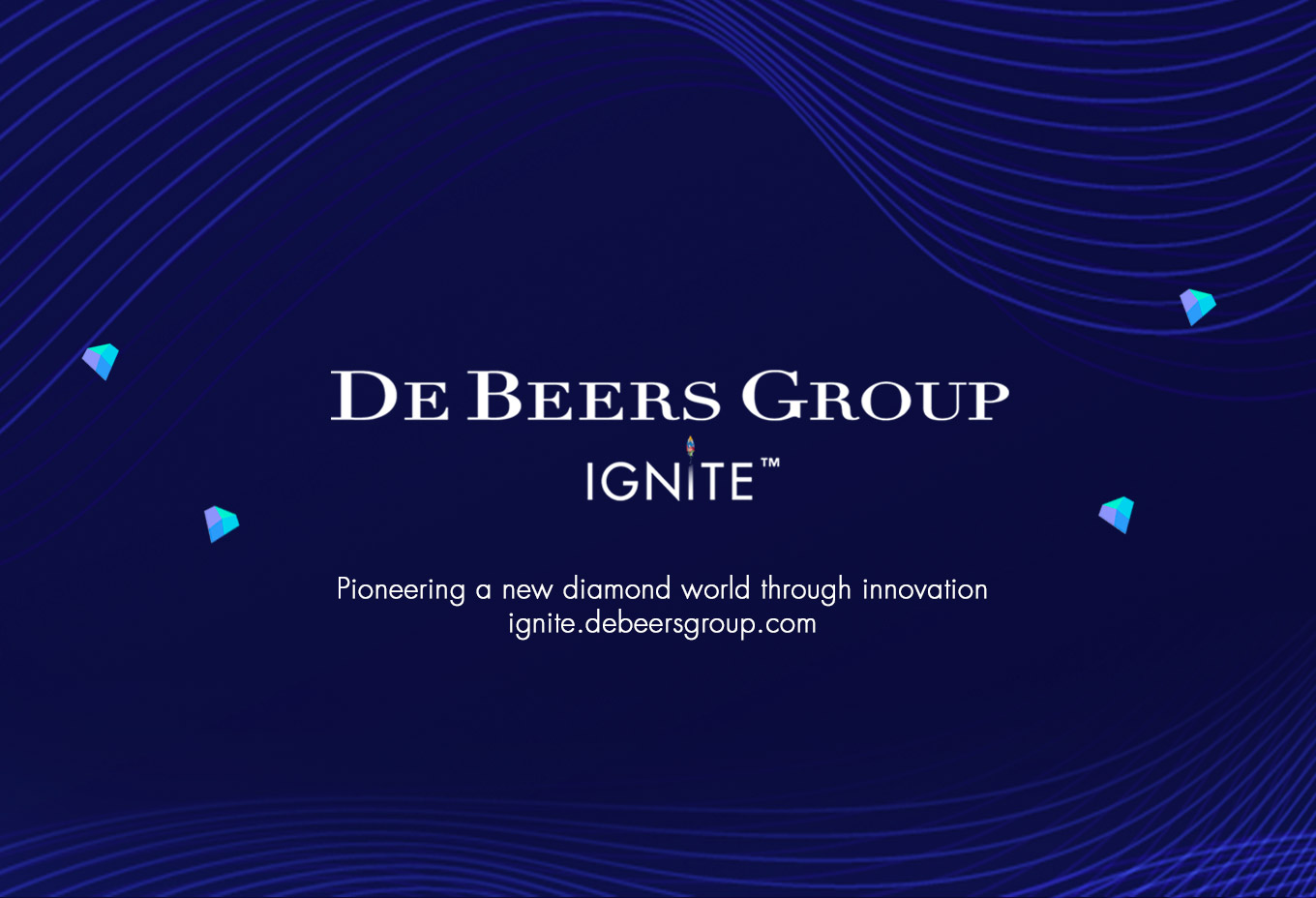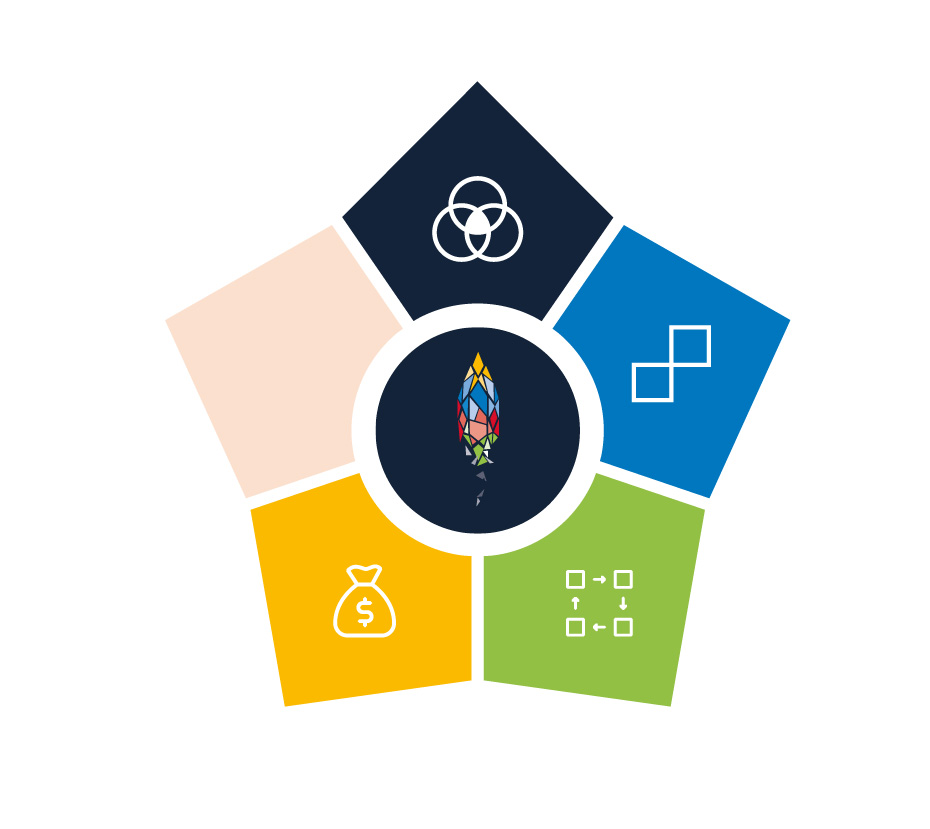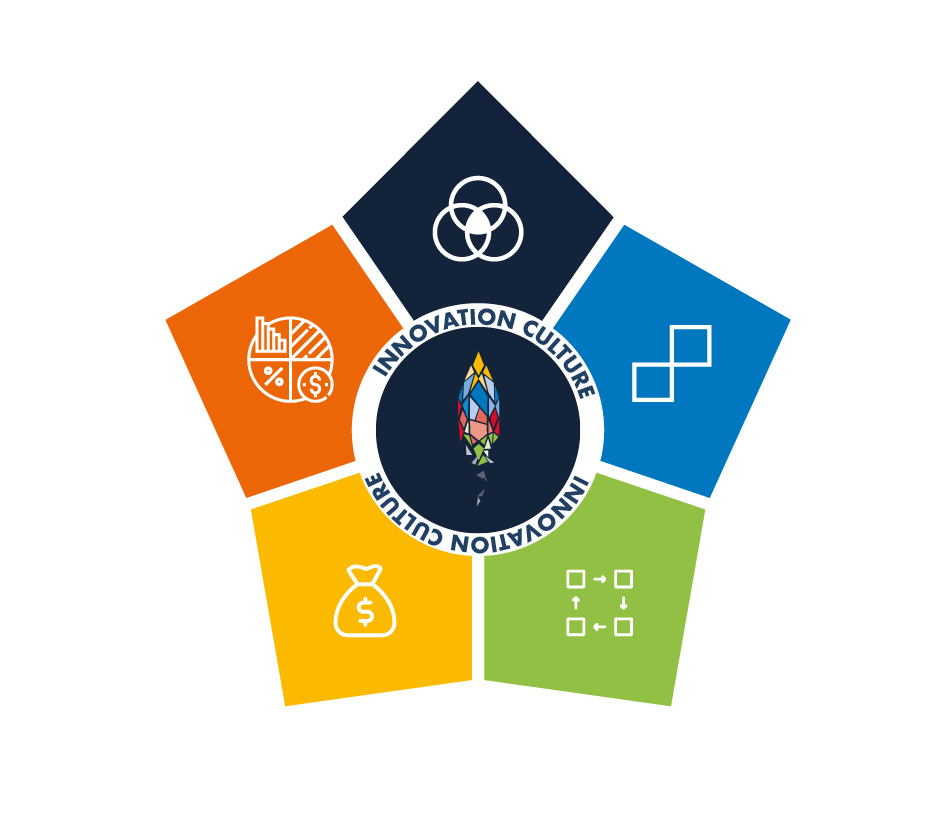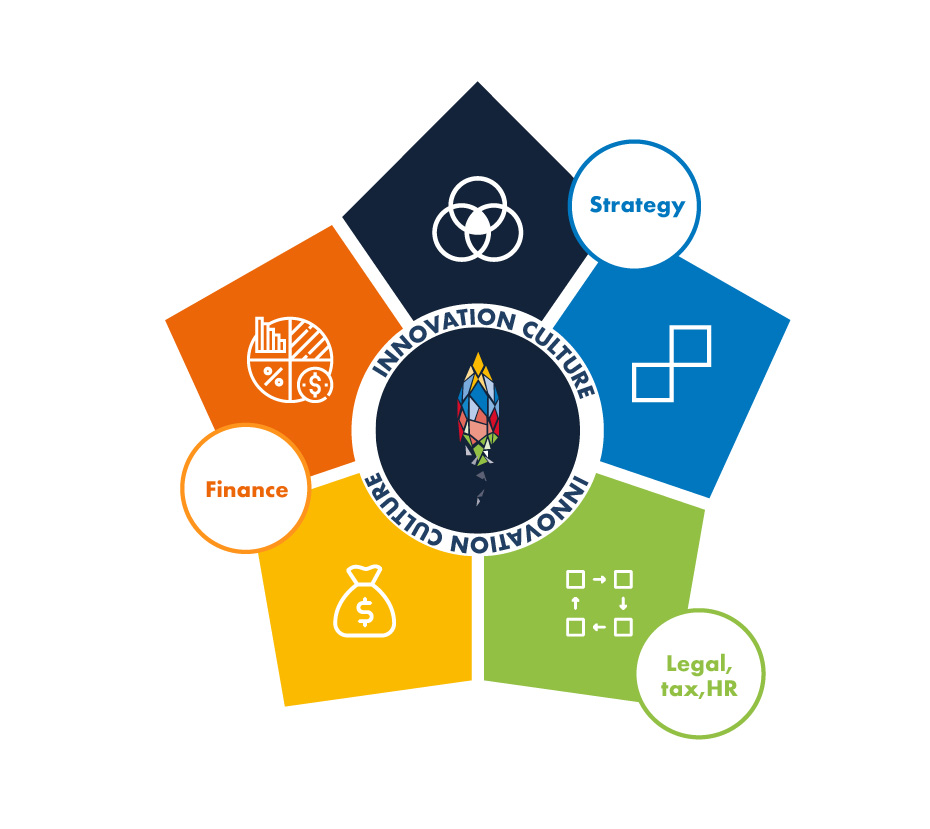Blog: Seven key elements for building a corporate innovation system — reflections on the first two years of
De Beers Group Ignite

As all sectors grapple with the new reality brought by the Covid-19 pandemic, the natural tendency for businesses in times of crisis can often be to double-down, focus on core operational and profitability priorities while preserving cash, and ride the wave to a more ‘normal’ operating environment.
While this may seem logical, and even sensible, it is precisely during uncertain times that ongoing investment and focus on innovation is most critical. It will be those businesses that stay the course with their innovation agendas – albeit perhaps with revised budgets and sharpened focus – that emerge from the crisis with not only their core business in a stronger position, but also best prepared to deliver on their strategies and capture opportunities in a post-Covid world.
Two years ago – before Covid-19 reshaped our lives – De Beers Group set out to overhaul its approach to innovation, culminating in formalising the various innovation activities taking place across the group into one central function named Ignite. As a business with an industry leadership position, and which operates throughout the diamond value chain – from rough diamond recovery and sales through to retail sales and consumer engagement – the innovation opportunity is extensive and diverse. Through Ignite, a core dedicated team now spearheads our innovation agenda.
But building a corporate innovation system isn’t easy, particularly for large corporates where longstanding processes and ways of working are often well ingrained. While these ways of working may be entirely effective for the business at large, our experience in building Ignite has shown that innovation, particularly in the ideation and incubation phases, requires a custom-designed approach. It needs to co-exist with the wider business, but also have dedicated funding, management and delivery models to ensure new ideas can be funded and tested in a progressive manner where the aim is to reduce the uncertainty inherent in any innovation.
While Ignite is still in its early stages, by outlining these seven key elements of our corporate innovation system and how they work together, I hope to be able to share a useful blueprint that can be built upon and improved by others who may also be embarking on an innovation journey, or navigating that journey throughout the course of the pandemic.
Strategy

The critical first step in building a corporate innovation approach is ensuring innovation is explicitly tied to company strategy. This can be developed in a number of ways, including establishing an ‘innovation thesis’, which outlines clearly defined themes (similar to investment themes a venture capital firm might use to focus its activities) aligned to business strategy. Once strategy themes are defined, the innovation thesis provides a focal point from which innovation activities can unfold. This is a two-way relationship because just as innovation needs to be borne out of strategy, so too will it help re-inform strategy over time.
Indeed, the previously separate domains of strategy and innovation are, in my view, increasingly converging due to the increasingly uncertain context in which businesses operate. Under such conditions, a test and learn approach to path-find through this uncertainty provides a better way forward. The more closely strategy and innovation themes intertwine, the more effective both become.
A portfolio approach

Once innovation themes have been identified, they need to be translated into a portfolio which is tightly aligned to advancing the strategy. It must be a balanced portfolio of innovation investments, where balance can mean different things for different businesses, depending on the starting position, risk appetite and so on.
Striking and maintaining the right balance between innovation initiatives focused on optimising an existing profitable core business, while simultaneously testing numerous new business models, is often a difficult balance at any point in the cycle, but especially so during periods of uncertainty or crisis. It’s tempting to want to pull back from spending on advancing the future, but it is a critical discipline to maintain. There is a growing body of evidence that shows those companies that resist the temptation to retreat to the core and maintain this balance will emerge stronger from a crisis and are better equipped to continue to deliver on their strategies, and take advantage of opportunities that the crisis will often reveal. Over time, they outperform.
For Ignite, we’ve synthesized a number of leading innovation frameworks to guide our approach, settling on a relatively simple “Optimise today’s business/Explore tomorrow's business" framework. This approach ensures innovation both optimises performance of the core, profitable business, while also positioning the business for new, adjacent areas of growth. Our portfolio also includes a focus on areas that will be transformational for our business in the future, largely driven by emergent technology trends.
Once the portfolio has been established, it needs to be actively managed so that resources are deployed against the right mix of activities. This could be compared with managing a portfolio of stocks, where you have the staples that form the foundation of your portfolio, while also having more adventurous plays. The challenge for any business is finding the right balance between optimise and explore innovation initiatives and maintaining that balance through the cycle. This isn’t always easy but is critical to building an innovation portfolio focused on advancing today, while pathfinding for tomorrow.
Processes and Tools

In the majority of cases, the traditional project management toolkit and other tools for managing continuous improvement initiatives in the profitable core, don’t work very well for innovation initiatives. Innovation requires an entirely separate set of tools and processes, which in most, if not all, cases are fundamentally different from those that would be appropriate for other activities.
Within Ignite, we’ve approached this challenge by creating an Innovation Playbook to equip the business with a set of processes, tools and techniques that are ideally suited to advancing innovation initiatives. The playbook combines the best practices we observed internally with best of external innovation practices to provide a detailed ‘how to’ guide for innovation teams. But the playbook itself is only half the journey. There is also a cultural change piece, as encouraging people to work in fundamentally different ways from what has been done previously can be easier said than done.
Governance and Funding

Innovation initiatives require a new or extended version of existing governance processes and a different approach to funding. The conventional core business metrics don't apply to many innovation initiatives. And asking teams to develop what Eric Ries described as comprehensive ‘fantasy plans’ not tethered to reality’ requiring one large upfront investment is wasteful since those initiatives end up with a higher probability of ‘tail chasing’ ahead. Instead, a metered or progressive approach to funding, akin to seed funding within the venture capital environment, provides an innovation-tailored and cost-effective approach. This is particularly important in the current environment, where cash preservation is top of mind for all businesses.
Such an approach does three key things. Firstly, it allows a number of innovation ideas and initiatives to continue to move forward throughout the crisis, even when cash is tight. Secondly, it minimises waste, as only enough funding and people are assigned to new innovation initiatives to move through the next few rounds of testing loops. Thirdly, it reduces uncertainty both for those involved in delivering innovation and for the business, as funding is progressively made available on a systematic basis, behind an increasingly ‘surer thing’. You can’t pick the winners up front.
To formalise this approach, establishing a dedicated innovation funding body creates a supportive, yet rigorous component of the corporate innovation system. It allows funding to be allocated and managed across all innovation investments within the portfolio to drive efficient and effective capital allocation.
We established an Innovation Council within De Beers more than a year ago, as part of the company’s overall approach to innovation. It is a small, but well-formed body with senior representatives across Finance, Legal and Ignite. Its purpose is to ensure innovation teams have rapid access to next stage funding when they need it, as progressive testing of new ideas can’t be planned for within a traditional financial forecasting approach.
Measuring Progress

It’s critical to be very clear on how corporate innovation should be measured and that this is understood and agreed at all senior levels. This was the first thing we thought about when establishing Ignite, as measuring innovation can be challenging within the operating model of a large corporate.
In addition to portfolio management metrics, there are two broad buckets that we’ve established to evaluate progress for innovation initiatives against key metrics – these are activity metrics and impact metrics. Activity metrics relate to the progress and process elements of advancing initiatives, and the speed with which they are carried out for the cost incurred. But ultimately, innovation must have clear, measurable and verifiable impact.
While most initiatives can have a number of impacts, it’s critical to keep financial impact top of mind. This includes topline growth impacts using measures such as revenues from new products and services, and new business models. It’s also critical to look at conversion of investment dollars into innovation impact and make changes to other parts of your corporate innovation system to drive improvements in these conversion ratios over time.
Culture

Many people across the organisation can get involved in one way or another with innovation, and this might look different in different parts of the business. However, creating a powerful innovation culture is only possible if managers and senior executives accept a simple yet uncomfortable truth – that most new ideas won't work out as originally anticipated (the so-called plan A) and that it may be necessary to move through several successive plans (B, C, D, etc.) to find a way to deliver the desired impact some ideas just won’t make it.
In order to create a safe and nurturing environment for innovation to flourish, it must be acknowledged that the uncertainty of the idea working out is high. A particularly powerful shift is removing the word ‘failure’ from the innovation vocabulary and instead replacing it with ‘unexpected outcomes’ at scale across the company so that it becomes an accepted and embraced part of the way we do things around here.
Along the way, mechanisms need to be put in place so that talented people don't just exit the company every time outcomes differ from Plan A expectations, and that they have opportunities to get involved in one of the next initiatives being advanced through the innovation pipeline. To be clear this is a difficult balancing act. It’s impossible to make it a completely safe flight without all of the entrepreneurial tension associated with short runways and limited funding. So, the focus should be on establishing the right mechanisms that ensure employees are motivated and encouraged to explore unproven ideas, while also knowing that their individual performance and value to the business is not based upon executing unproven ideas at all costs. This in many ways seems to be at the heart of the cultural challenge around corporate innovation.
Innovation systems cannot function in a vacuum

Links to finance team, for example, are numerous. The saying ‘show me what you are spending your money on and I will tell you what your strategy is’ brings to life the imperative of making sure that what is being funded and what's in your strategy are in tight synchronisation. Tax and legal colleagues also need to be deeply engaged in the innovation process to ensure they are sighted early and often on new ideas as they progress through testing and subsequent scaling.
In addition, developing an external ecosystem approach is a new normal, whether that be through research collaborations with academic institutions, engagement with start-ups or other ecosystem partners. In the case of Ignite, this has included establishing De Beers Group Ventures, which is focused on investing in entrepreneurs and start-ups who can help drive further impact in key areas aligned to our innovation themes and portfolio.
Lastly, human resources play a critical role in helping identify individuals whose skillsets best match an innovation opportunity, and finding solutions to liberate those individuals from existing roles in a way that does not disrupt the core business. There is also an ongoing need to identify and secure external talent. The closer corporate innovation activities work with human resource colleagues, the more everyone understands what is required, what good looks like and how they must build an external network to find and track the best talent and match it to the innovation opportunities.
Summary
I hope I’ve been able to share some useful insights by outlining these seven foundational elements of a corporate innovation system and our experiences to date with Ignite. If you’d like to continue the conversation, or find out more about Ignite and its focus, I’d encourage you to visit our website or get in touch via [email protected].
***
If you enjoyed this article, give it a clap on Medium and follow Neil Ventura for more of his thoughts on corporate innovation at De Beers Group.